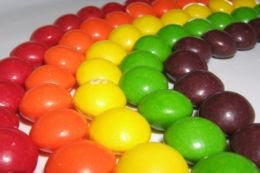
In an ideal world, parents would read these cautionary tales and rise up and take control of what their kids eat by changing their shopping habits and meal choices. Instead in reality, no wide action is taken to prevent the harms they are causing their kids by the foods they let them consume day after day. Perhaps we should start the trend in schools. In Massachusetts, a bill banning the sale of junk food and drinks at school raises issues about the school role in educating children and their parents and “foster a healthier learning environment for students.” (Support grows for limiting junk food in Mass. Schools) This bill “[gained] momentum in the Legislature” proving that others are seeing the need in school involvement and health choices. If we are asking schools to regulate junk food and soft drinks why not ask them to ban artificial dyes as well?
100 years ago parents didn’t realize the risk that cigarettes posed but when the evidence mounted they kept them away from their children. Until 50 years ago we never worried about car seats to protect our children in the automobile now not only are they standard but it is the law that parents protect their precious cargo with child safety restraints. Now that we are discovering the affect of these dyes what is keeping us from acting swiftly to ensure the health of our children? Parents, schools, and manufacturers should work together to give our children the best possible future. Sure they deserve a snack occasionally but do those snacks have to be laced with harmful substances? Give them their Skittles—just keep the chemicals.
100 years ago parents didn’t realize the risk that cigarettes posed but when the evidence mounted they kept them away from their children. Until 50 years ago we never worried about car seats to protect our children in the automobile now not only are they standard but it is the law that parents protect their precious cargo with child safety restraints. Now that we are discovering the affect of these dyes what is keeping us from acting swiftly to ensure the health of our children? Parents, schools, and manufacturers should work together to give our children the best possible future. Sure they deserve a snack occasionally but do those snacks have to be laced with harmful substances? Give them their Skittles—just keep the chemicals.
I agree, theyre should be stricter limitations on the chemical dyes used in our foods. Especially foods primarily consumed and favored by children. When you think about it, would our favorite foods be any less tasty with out these harmful artificial coloring? According to the Center for Science in Public Energy, Along with cancer and allergic reactions, these dyes can also cause hyperactivity in children. This is something we commonly associate with being caused by sugar, when in fact it may be caused by these artifical dyes. While effort put in by schools and parents would be effective, the manufactuerers should be directly stressed to find alternative methods of coloring or eliminate coloring completely.
ReplyDelete